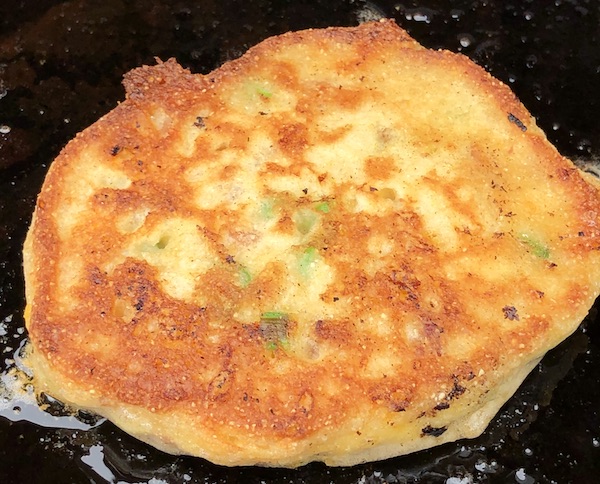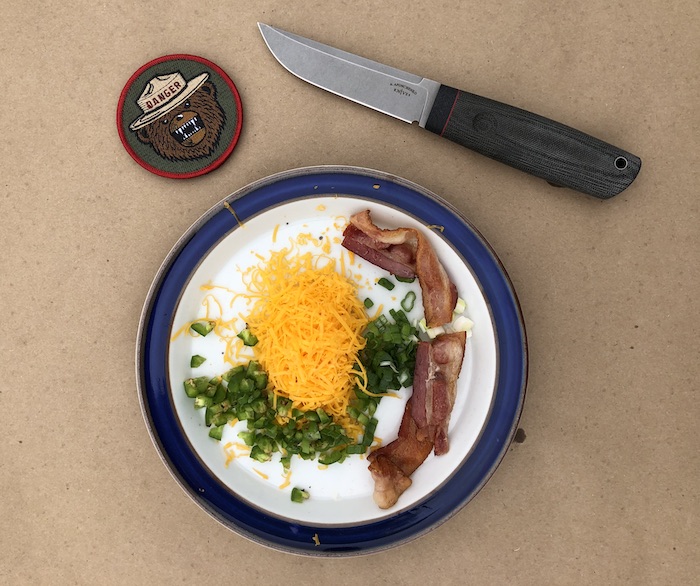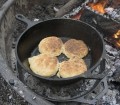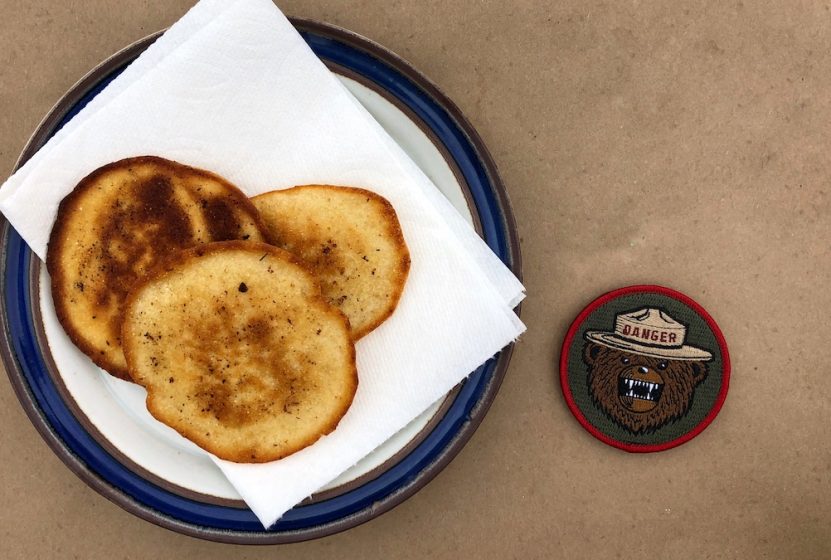All around the world different civilizations and cultures have developed ways to get necessary and filling carbohydrates by making bread while on the go and/or from minimum ingredients.
Fry bread, tortillas, pita- some baked directly in the ashes of a campfire have kept people going for centuries.
Today’s Camp Kitchen recipe comes from an amalgamation of these recipes with a North American spin.
Hoe cakes are often thought of a southern dish, but probably go back further to American Indians who cooked ground corn mixed with water and possibly salt on hot rocks.
Over time the ingredients expanded and method morphed to what are known as Hoe Cakes, Johnny Cakes.
The food picked up the semi-misleading name of Hoe cake started as early as the 1700s. Some believe the term hoe cake came from the method of actually using the farm implement as the cooking surface. Others point to the term hoe being a common name for a flat griddle.
In 1793 “Rhode Island Johnny Cake” was used in possibly the first cookbook printed in the United States. Even Johnny Cake, may have been originally called Journey Cakes since they could be made in advance and eaten on the go. -Whatever you call them they are good!
The Hoe Cake batter is pretty much the basics of what you’d use to make corn bread. The Ingredient list is pretty straight forward and depending on what you have on hand can still be made with substitutions here and sugar and salt adjusted to taste.

Ingredients:
1 Cup of Self Rising Flour
1 Cup of Cornmeal again self-rising if you have it or corn meal mix for making corn bread.
2 Eggs
1 Table Spoon of Sugar (Again this can be subbed with another sweet like honey or agave)
3/4 cup of butter milk- if yo don’t have it add a dash of lemon juice to milk.
1/4 Cup Vegetable Oil or Bacon Grease (We like the bacon method!)
1/3 cup of water
This should make 10-12 cakes.
Something to fry your cakes in: Oil, butter, or clarified margarine or you guessed it, bacon grease!
Method:
Combine all the ingredients and stir throughly to make sure you don’t have lumps. Should be a fairly thick batter.
Once your skillet or frying pan is nice and hot and you have your frying oil going start spooning in the batter a table spoon or two just like making pan cakes. As the cook they edges should turn golden and once the cake is solidified on the bottom where it can be lifted completely without breaking you can turn it over.

This again is up to your taste some people like them more “well done” just don’t burn ‘em.
Depending on the size of your pan you should be able to dow two at a time. As you cook your cakes you may have to add more grease, oil or butter as the cooking cakes will soak it up.
Put on a paper towel to take up the extra grease and then dig in.
Depending on your personal tastes and ratios of sugar these can be enjoyed with maple syrup just like a pancake or eaten along with more savory dishes like stew, chili or cooked greens.

Hoe Yeah, Cakes !
Take your Hoe Cakes to the next level and make them a meal in them selves by adding grated cheddar, chopped jalapeño, green onion and chopped bacon (cooked you knuckle head) into your batter. This makes your cakes even more filling and much tastier!
Cook the bacon first and then your skillet will have a nice layer of delicious bacon grease to cook in. Extra bonus- your cakes will pick up the cooked bacon bits on the bottom of the pan.
Once you get the hang of it you can substitute any left overs you have or try different flavor combinations like ground meat or sausage, ham, cheeses, onions and peppers.
Pro tip: Make your batter ahead of time and put it on a water bottle. It will keep in your ice chest or fridge for two days which is enough for a weekend campout., but we don’t think they’ll last that long!





Hi, In sweden we have meal called Coal bun, is a kind of thick pancake with diced, salted or smoked pork. It was common among lumberjacks, coalers, rallies, fleets and other bodyworkers who lived under primitive conditions,
Then, as now, the batter is mixed to the charcoal bun of water, flour and salt in advance. Certainly as much as a day before. A frying pan is heated over the fire and then you first fry the pork. In the past, American pork was used, which is a type of salted pork that has a long shelf life and was therefore perfect to take out into the forest. The dry salted and pork came from America from the beginning, hence the name, but gradually it began to be prepared here as well. American pork is still available, but today smoked and diced pork is often used for the charcoal balls. When the pork is fried, beat the batter, which has become thick and fine, and let it brown properly in the lard or cooking oil.
Today, there are probably both one and the other wrinkles on the nose for this thick cake that basically drips of fat. Still, the carbon bullet survives through LCHF storms and Atkins diets. For sure, it is wonderful, when you stand there in the smoke from the fire and get your coal bun on an already neat napkin. It’s salty, crunchy and amazingly good.
Often served with lingonberry jam.
Recipes for charcoal buns
The batter is enough for about 4 carbon balls
400 g of American pork, salted pork or bacon
6 dl water
4 dl wheat flour
1 teaspoon salt
Serve with lingonberry jam, and black coffe
https://sv.wikipedia.org/wiki/Kolbulle